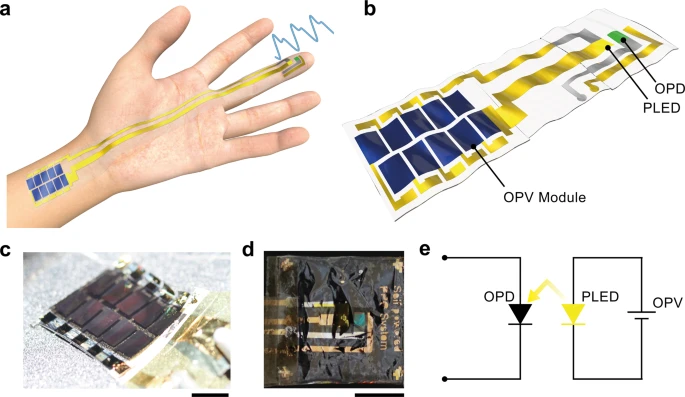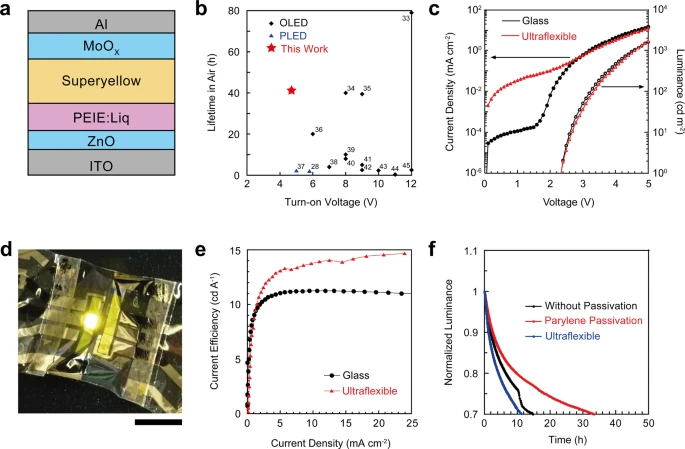

东京大学:开发出高度耐用的纳米片:减轻皮肤负担
-使用皮肤附着电极成功进行了一周的心电图测量-
2021 年 9 月 7 日
东京大学:
高耐久性纳米片的特征如下。
◆ 开发出世界上最轻的贴肤电极
通过将电极贴在皮肤上一周,我们成功地高精度测量了心电图。
◆ 电极制作在弹性纳米片上
电极超薄、高度耐用、高度粘合且透气。
不使用容易引起皮肤炎症的粘合剂而贴在皮肤上,可显着减轻皮肤负担。
◆ 可以长期测量健康状况。
未来有望应用于可穿戴设备,用于医疗领域疾病的早期检测。
这项研究的结果:
将于2021年9月6日(美国时间)在美国科学期刊《国家科学院公报》网络版发表。
日本经济新闻
https://www.nikkei.com/article/DGXLRSP617186_S1A900C2000000/
Self-powered ultraflexible photonic skin for continuous bio-signal detection via air-operation-stable polymer light-emitting diodes
Ultraflexible optical devices
have been used extensively in next-generation wearable electronics owing to their excellent conformability to human skins.
Long-term health monitoring
also requires the integration of ultraflexible optical devices with an energy-harvesting power source; to make devices self-powered.
However, system-level integration of ultraflexible optical sensors with power sources
is challenging because of insufficient air operational stability of ultraflexible polymer light-emitting diodes.
Here we develop an ultraflexible self-powered organic optical system
for photoplethysmogram monitoring by combining air-operation-stable polymer light-emitting diodes, organic solar cells, and organic photodetectors.
Adopting an inverted structure and a doped polyethylenimine ethoxylated layer, ultraflexible polymer light-emitting diodes retain 70% of the initial luminance even after 11.3 h of operation under air.
Also, integrated optical sensors
exhibit a high linearity with the light intensity exponent of 0.98 by polymer light-emitting diode.
Such self-powered, ultraflexible photoplethysmogram sensors perform monitoring of blood pulse signals as 77 beats per minute.
Nature Communications